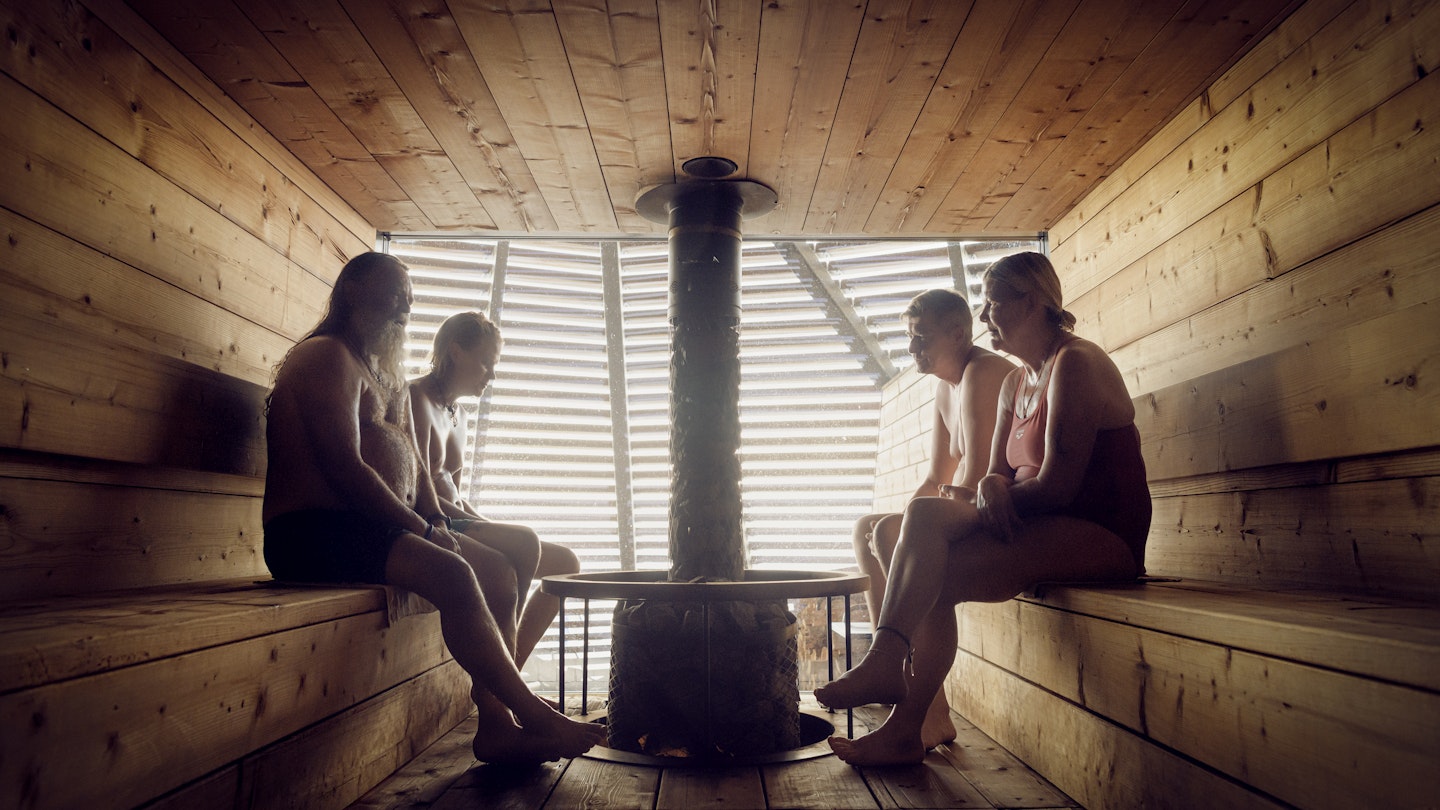Finland is the kind of place a child with a particularly vivid imagination might dream up, complete with flying reindeer, the real Santa, and so much snow.
It’s a place of extremes – of darkness and light, of bitter cold and unfathomable wilderness. Whether you’ve come to dash through frozen forests by husky-drawn sleigh as the Northern Lights flash overhead in Lapland, or to hunker down in a summer cottage on the shores of a placid lake in the undying light of summer, it is bound to be one of your Nordic dream destinations.
If you love saunas, silence, and nature, you’ll fit right in. Here are the things to know to help you plan your trip and stay safe and healthy in Finland.
Planning Your Trip to Finland
Consider Arriving Outside of Helsinki
While Helsinki serves as the country’s principal gateway, consider flying into a regional airport if you’re aiming for a non-urban adventure. Airports like Rovaniemi (gateway to Lapland and Santa HQ) or Tampere (gateway to the lakes) may offer better access to nature.
Public transport in Finland is efficient, connecting major cities and towns with trains and buses. However, if you’re venturing into the wilds, renting a car is advisable, as distances can be vast. Always pack drinks and snacks for your journey, as services between hubs can be sparse.
Experience Seasonal Wonders
Finland is too expansive for just one bite; careful planning is essential to enjoy all it has to offer. During summer, from June to August, you’ll find ideal hiking and camping opportunities in wilderness areas like Urho Kekkonen National Park. This is also a perfect time to kayak through the breathtaking Lakeland, home to 188,000 lakes, or indulge in foraging for berries and swimming in invigorating lakes.
As autumn approaches, Lapland becomes a golden spectacle, with reindeer beginning to rut. When winter arrives, the landscape transforms into a wonderland, offering activities such as dogsledding, snowmobiling, and skiing. Moreover, the Northern Lights are a must-see in October, November, and March.
Save Money on Your Trip
Finland can be pricey, but you can enjoy delicious meals at markets and save by camping. Many towns have covered market halls where you can grab picnic supplies or enjoy an affordable all-you-can-eat lunch buffet. Camping provides an inexpensive way to travel, though most campsites are open from June to August.
Etiquette in Finland: How to Fit In with the Locals
Keep Things Casual
Finnish people often seek solace in nature, reflected in their casual clothing styles. There’s no need for fancy attire when you’re venturing beyond the city; instead, pack loose layers, thermals, and sturdy walking shoes.
Say Hello, Finnish Style
Greetings in Finland are slightly reserved; a handshake and eye contact are standard, while close friends may hug. A simple “Hei” or “moi” works for hellos, with the latter also serving as a farewell when repeated.
Embrace the Silence
Silence in Finland is appreciated; conversing is minimal, especially in social settings like saunas. Visitors should respect the quiet atmosphere and not feel pressured to fill silence with idle chatter.
Experience the Sauna Culture
The sauna holds a special place in Finnish culture, seen as a social and spiritual space. With about three million saunas in Finland, renowned for their healing properties, you should learn the proper etiquette: shower first, keep quiet, and sit on a towel. Always stay hydrated during your sauna sessions.
Health and Safety in Finland
Stay Prepared Against Insects
In the northern summer, prepare for swarms of mosquitoes, sandflies, and other insects. Strong insect repellent is essential, especially near lakes and forests.
Access Excellent Healthcare
With some of the best healthcare facilities globally, encountering health issues in Finland is manageable. Ensure you have decent travel insurance, especially if you intend to partake in winter sports or explore less-traveled areas.
Navigate the Wilderness Safely
In Finland’s wild areas, be mindful of potential dangers such as exposure and wildlife encounters. Always carry a map and inform someone of your plans when heading into national parks.





